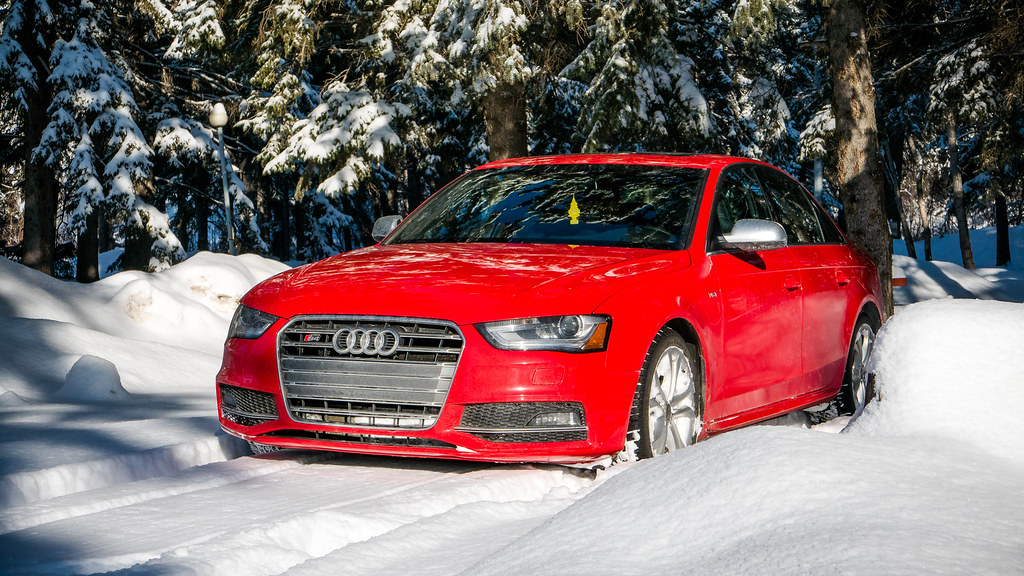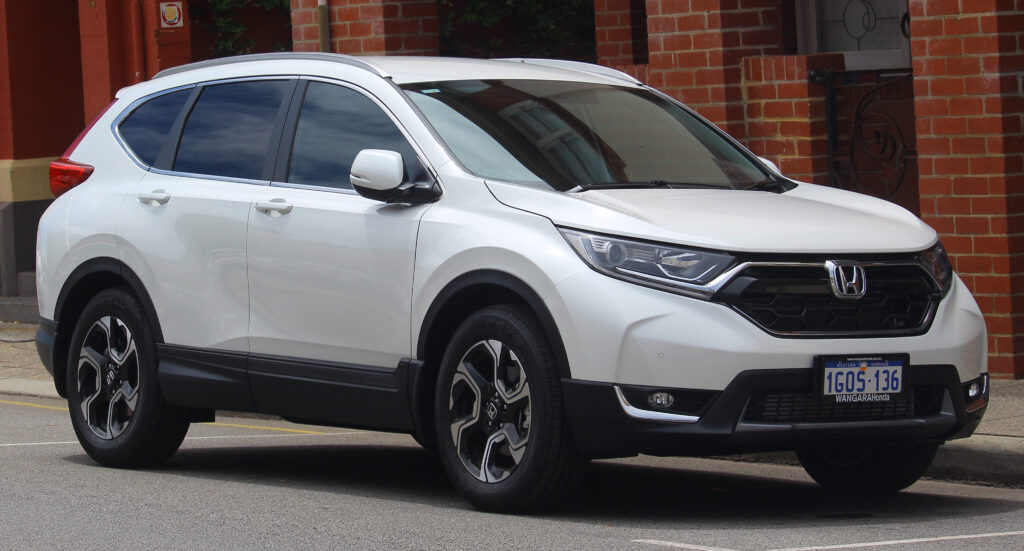
In an era saturated with information and overt declarations, a subtle art persists: the embedding of hidden messages and ingenious, understated features within the products and experiences that define our daily lives. These aren’t just accidental inclusions; they are deliberate acts of design, engineering, or creative genius, often intended to reward the observant, solve an unarticulated problem, or simply provide a moment of unexpected delight. They reflect a deeper philosophy where true sophistication lies in the details that often go unnoticed by the casual observer, yet profoundly enhance the overall experience.
Just as a film director might use symbolic color to convey profound emotional truths, as seen with the striking red in “Schindler’s List” highlighting the innocence amidst horror, so too do the ‘directors’ of design and engineering embed their own powerful ‘messages’—in the form of brilliant, often secret, functionalities—into the very fabric of the products we use daily. These range from the quiet luxury of a cleverly concealed amenity in an automobile to the strategic brilliance of an advertising campaign that speaks directly to its target audience through an almost invisible channel. It’s an intellectual easter egg hunt, revealing the meticulous thought and foresight behind their creation.
From the meticulous craftsmanship of luxury vehicles to the practical ingenuity found in everyday automobiles, manufacturers have integrated a multitude of features that transcend basic utility. They represent a commitment to holistic design, addressing everything from comfort and convenience to safety and sustainability in ways that challenge our perceptions of what a vehicle can truly offer. We embark on a journey to uncover some of these remarkable, often overlooked, marvels of engineering and design, proving that sometimes, the most significant innovations are those we have yet to discover.

1. **Secret Umbrella Compartments in Rolls-Royce and Škoda**Luxury often expresses itself in the minutiae, and few automotive details exemplify this blend of opulence and practicality quite as compellingly as the hidden umbrella compartments found in both Rolls-Royce and Škoda models. In Rolls-Royce vehicles, specifically the Phantom and Ghost, custom-designed umbrellas are elegantly stowed within the rear doors. These are not merely utilitarian items; they are crafted with the same exacting standards as the cars themselves, boasting matching leather handles and the iconic Rolls-Royce monogram, elevating a simple necessity to a statement of bespoke luxury.
The engineering behind this feature is nothing short of ingenious. The compartments themselves are equipped with a sophisticated drying system that automatically activates the moment the umbrella is returned to its housing. This ensures that regardless of the weather conditions encountered, the umbrella is impeccably dry and ready for its next deployment, a testament to the comprehensive design philosophy that anticipates and mitigates every conceivable inconvenience for the discerning owner.
Across the spectrum, Czech automaker Škoda has democratized this lavish concept, integrating similar functionality into its more accessible Superb and Octavia models. Their umbrella compartments are cleverly positioned within the front doors, complete with drainage systems designed to prevent any water accumulation. The Škoda implementation arguably merits even greater engineering commendation, for it manages to incorporate this thoughtful luxury touch while upholding an affordable price point, demonstrating that practical elegance is not exclusive to the ultra-premium segment.
Both manufacturers recognize a universal truth: the inevitability of unexpected rainfall. There is a distinct satisfaction in gracefully retrieving an umbrella from a dedicated, seamlessly integrated compartment during a sudden downpour, allowing one to continue their journey unimpeded. This feature masterfully bridges the divide between pure practicality and understated luxury, illustrating that the most cherished innovations often arise from simple, elegant solutions to everyday challenges, rather than solely from flashy technological advancements.
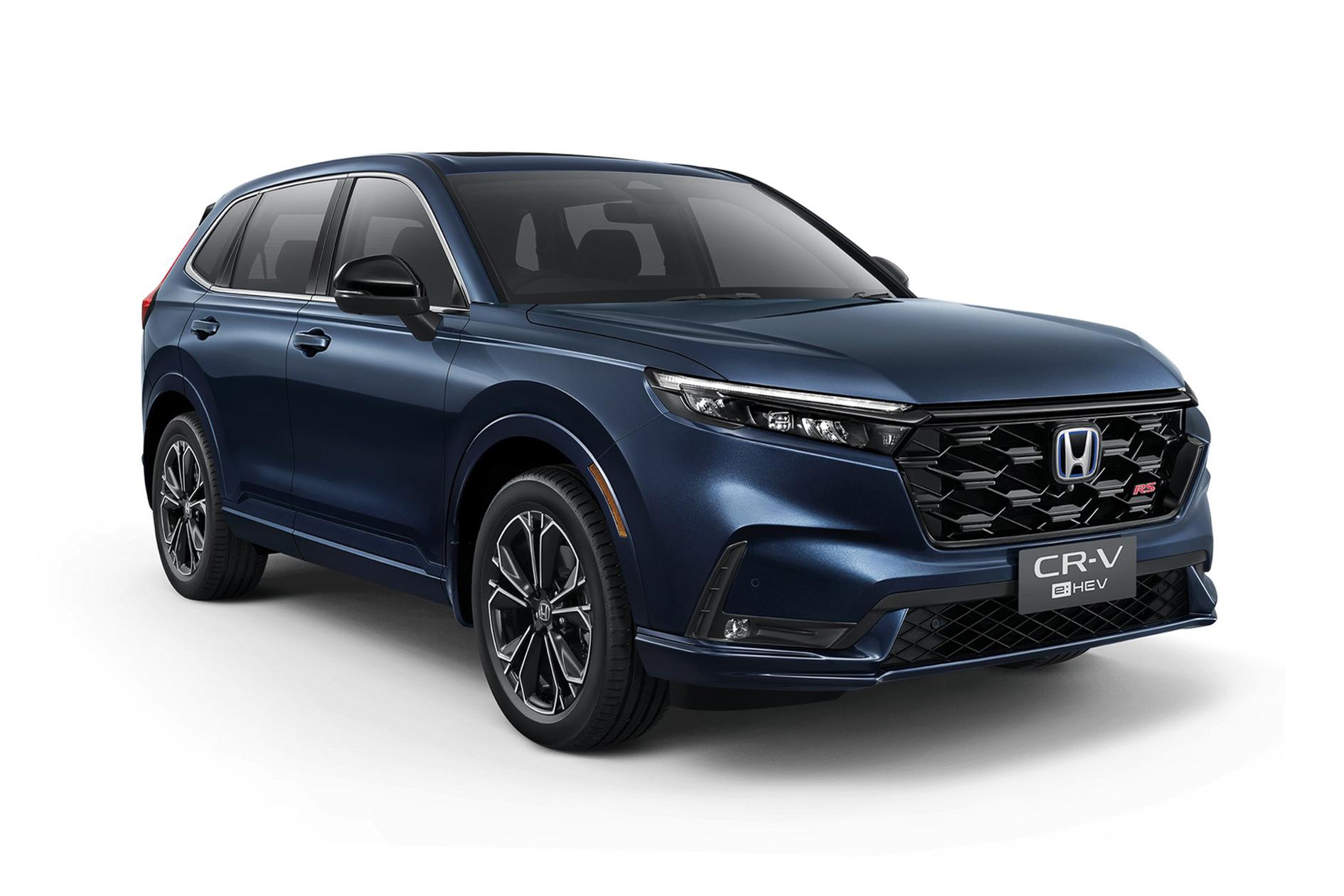
2. **Honda CR-V’s Hidden Picnic Table**Within the unassuming cargo area of earlier Honda CR-V models lies one of automotive design’s most charmingly practical secrets: a fully functional picnic table. This ingenious integration, while a hallmark of initial CR-V generations, has remained undiscovered by a surprising number of its owners. What first appears to be a conventional cargo floor panel is in fact a versatile, multi-purpose unit that can be easily removed, inverted, and deployed as a robust, waterproof surface, ideal for spontaneous roadside picnics, lively tailgating events, or even as an emergency workspace.
The engineering underpinning this feature is a marvel of deceptive simplicity and effectiveness. The cargo floor panel is meticulously constructed with a reinforced plastic surface on one side, ensuring its durability when serving as the vehicle’s floor. The reverse side, however, reveals a smooth, flat surface from which sturdy, fold-out legs securely lock into place when extended. This thoughtful design clearly indicates Honda’s keen understanding of its target demographic: active families and outdoor enthusiasts who prioritize multi-functional capabilities that enhance their lifestyles without introducing unnecessary bulk or complexity into their vehicles.
Despite its modest weight, the picnic table is designed to support substantial loads, making it perfectly suited for a diverse range of activities, from preparing food and playing card games to supporting a laptop or serving refreshments. Its enduring appeal lies in its “hidden in plain sight” quality. Many CR-V owners have traversed countless miles over numerous years, blissfully unaware of this built-in convenience, only to experience a moment of delightful surprise upon its eventual discovery, as if unearthing a secret bonus feature in their already practical SUV.
While Honda eventually transitioned away from this feature in later CR-V generations, favoring more technologically advanced amenities, the picnic table maintains a legendary status among Honda enthusiasts. It stands as a prime example of thoughtful, functional design that elevated an everyday vehicle into something imbued with unique character and unexpected utility, a testament to a time when practical ingenuity often trumped purely digital solutions.
Car Model Information: 2020 Honda CR-V EX
Name: Honda CR-V
Caption: 2023 Honda CR-V e:HEV
Manufacturer: Honda
Aka: Honda Breeze (China, 2019–present)
Production: 1995–present
Class: Compact crossover SUV
BodyStyle: Sport utility vehicle
Layout: Front-engine, front-wheel-drive layout,Front-engine, four-wheel-drive layout
Chassis: Unibody
Predecessor: Honda Crossroad
Successor: Honda ZR-V
Categories: 2000s cars, 2010s cars, 2020s cars, All-wheel-drive vehicles, All Wikipedia articles written in British English
Summary: The Honda CR-V (also sold as the Honda Breeze in China since 2019) is a compact crossover SUV manufactured by Japanese automaker Honda since 1995. Initial models of the CR-V were built using the same platform as the Civic.
Honda began producing the CR-V in Sayama, Japan, and Swindon, United Kingdom, for worldwide markets, adding North American manufacturing sites in East Liberty, Ohio, United States, in 2007; El Salto, Jalisco, Mexico, in late 2007 (ended in early 2017); Alliston, Ontario, Canada, in 2012; and Greensburg, Indiana, United States, in February 2017. The CR-V is also produced in Wuhan for the Chinese market by Dongfeng Honda, and also marketed as the Breeze in China for the version produced at Guangzhou by Guangqi Honda.
Honda states that “CR-V” stands for “Comfortable Runabout Vehicle,” while the term “Compact Recreational Vehicle” was used in a British car review article that was republished by Honda, associating the model name with the Sports Utility Vehicle abbreviation of SU-V.
As of 2022, the CR-V is positioned between the smaller ZR-V (marketed as HR-V in North America) — with which the CR-V shares a platform — and the larger North American market Passport/Pilot or the Chinese market Avancier/UR-V. It is currently Honda’s best-selling vehicle in the world, and the second best-selling SUV globally in 2020.
Get more information about: Honda CR-V
Buying a high-performing used car >>>
Brand: Honda Model: CR-V
Price: $20,995 Mileage: 71,622 mi.

3. **BMW’s Secret Button Compartment**Discretely nestled beneath the dashboard in numerous BMW models lies a hidden compartment, a secret storage space activated by a virtually invisible button, that escapes the notice of most owners. This clever concealment underscores BMW’s dual commitment to luxury and functionality, often extending beyond the immediate visual experience. Typically situated to the left of the steering wheel, just below the light controls, this space only reveals itself when its subtle activator is pressed, allowing a felt-lined panel to smoothly swing open, exposing a tidy compartment roughly the size of a deck of cards.
The ingenuity of this feature is amplified by its complete invisibility when closed; even passengers intimately familiar with BMW interiors rarely discern its presence. The compartment was initially conceived with European drivers in mind, providing a secure and accessible location for highway toll tokens and parking coins. However, modern owners have imaginatively repurposed this space for an array of small essentials, including emergency cash, spare keys, memory cards, small medications, or even, in more romantic instances, a clandestine engagement ring awaiting the perfect moment.
Its strategic placement ensures that the driver can access its contents without diverting attention from the road, while simultaneously keeping valuables completely out of sight from casual observers or potential opportunists. BMW’s engineering team designed this feature with characteristic German precision. The opening mechanism operates with a satisfyingly damped action, preventing any abrupt snapping, and its closure system secures with a definitive click, confirming proper latching. The meticulous felt lining further enhances the premium experience by preventing contents from rattling during driving, thereby preserving the renowned acoustic tranquility of a BMW cabin.
What truly fascinates about this discreet feature is its remarkable persistence across multiple generations of BMW vehicles, despite remaining virtually undocumented in the brand’s marketing materials. It embodies a core BMW philosophy: that genuine luxury encompasses the discovery of thoughtful, rewarding details long after the initial purchase. These small moments of unexpected delight serve to continually reward the attentive owner, enriching the ownership experience in subtle yet profound ways over time.
Read more about: Beyond the Badge: Uncovering the Hidden Flaws in 14 Fan-Favorite Vehicle Models
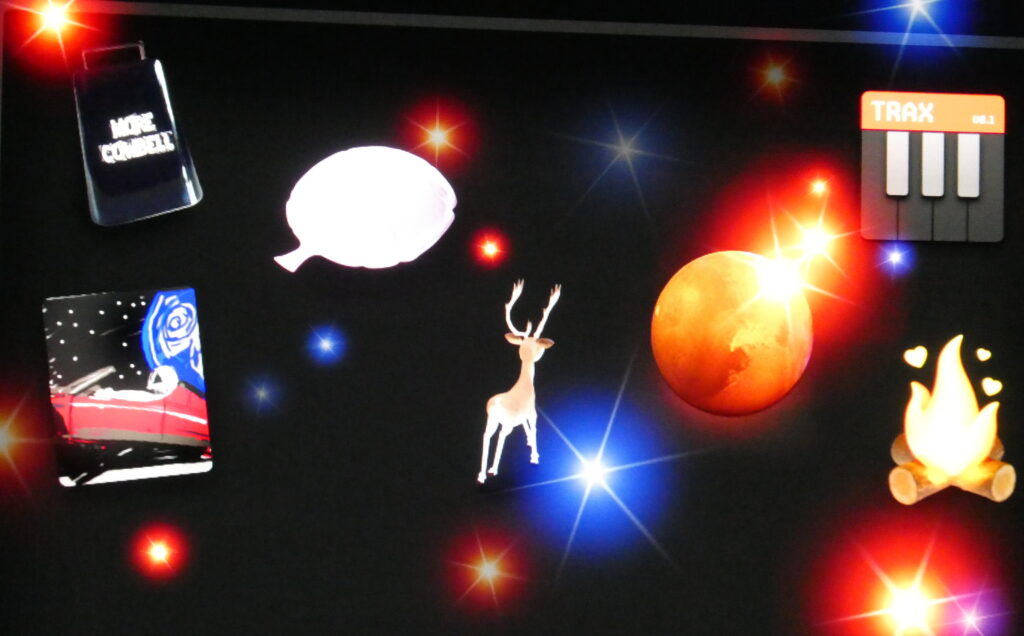
4. **Tesla’s Easter Egg Arcade and Entertainment Features**Beneath Tesla’s formidable facade of cutting-edge electric engineering and pioneering autonomous driving capabilities lies a deeply playful spirit, one that few other automakers have dared to embrace. This manifest itself in a comprehensive suite of hidden games, captivating entertainment features, and whimsical Easter eggs, all meticulously designed to transform the driving—or, perhaps more aptly, the charging—experience in utterly unexpected ways. At the core of these features is Tesla Arcade, a full-fledged gaming platform accessible through the main touchscreen, though not immediately obvious to new owners.
Tesla Arcade encompasses a diverse range of titles, from cherished Atari classics to contemporary games like Beach Buggy Racing, where drivers can engage their actual steering wheel and pedals as game controllers while the vehicle is parked. The processing power allocated to these games is far from an afterthought; Tesla has thoughtfully integrated serious gaming hardware, rivalling dedicated systems, to ensure a seamless and immersive experience. This underscores a design philosophy that views the vehicle not just as transportation, but as a dynamic, interactive space.
Beyond gaming, Tesla has ingeniously scattered numerous Easter eggs throughout its operating system, adding layers of unexpected humor and functionality. Uttering “open butthole” to the voice command system, for instance, triggers the magical opening of the charge port, a testament to the brand’s irreverent wit. Activating “emissions testing mode” unlocks an array of flatulence sounds, which can be amusingly directed to different seats within the vehicle—a juvenile, yet undeniably entertaining, feature. During festive seasons, “Santa Mode” transforms the navigation display into a charming depiction of a sleigh gliding across a snowy landscape, complete with accompanying sound effects.
Perhaps most famously, “Romance Mode” transforms the central screen into a virtual fireplace, complete with realistic crackling sounds and activated cabin heating, instantly creating a cozy ambiance perfect for date nights spent charging. Similarly, “Mars Mode” replaces the navigation map with a detailed Martian landscape, a clear nod to CEO Elon Musk’s ambitious aspirations for space exploration. What distinguishes Tesla’s approach to these features is their continuous expansion through over-the-air updates, a paradigm shift in automotive ownership.
Owners frequently awaken to discover new entertainment options they never explicitly purchased or requested, generating moments of surprise and delight that profoundly strengthen brand loyalty. While traditional manufacturers traditionally focus almost exclusively on driving performance, Tesla recognizes that modern vehicles are increasingly evolving into living spaces, where occupants spend significant periods of time, particularly when stationary during charging sessions. These features vividly reflect Tesla’s software-first approach to automotive design, treating cars less like conventional machines and more like smartphones that happen to possess wheels, continuously evolving and delighting their users.
5. **Volkswagen Group’s Hidden Fuel Filler Cap Holder**Sometimes, the most elegant solutions are also the most deceptively simple, a principle perfectly exemplified by the Volkswagen Group’s thoughtfully engineered fuel filler cap holder. This subtle yet remarkably useful feature, integrated across a vast array of Volkswagen, Audi, Seat, and Škoda models, frequently goes unnoticed by owners for years. Upon opening the fuel door, one discovers a small, perfectly contoured notch situated on its inside edge. This unobtrusive detail serves a singularly specific purpose: it securely cradles the fuel cap during refueling, thereby eliminating the common irritation of awkwardly holding the cap or allowing it to dangle against the vehicle’s paintwork, which often leads to unsightly scratches.
The brilliance of this engineering lies in its profound simplicity. The notch is precisely dimensioned to accommodate the cap’s edge, holding it firmly in place regardless of the vehicle’s angle, even on sloped surfaces. Furthermore, its intelligent placement ensures the cap remains prominently visible throughout the refueling process, significantly reducing the likelihood of driving away without replacing it—a surprisingly frequent oversight that can trigger dashboard warning lights and potentially compromise the integrity of the fuel system.
This feature embodies the quintessential German engineering philosophy: good design should resolve problems without inadvertently creating new ones. Unlike complex electronic solutions that may eventually malfunction, this straightforward mechanical feature demands zero maintenance, incurs virtually no additional manufacturing cost, and is guaranteed to function flawlessly for the entire lifespan of the vehicle. The detail is seamlessly integrated into the plastic molding of the fuel door as a single, cohesive piece, negating the need for any additional parts or intricate assembly.
What makes this particular feature especially compelling is its pervasive presence across the Volkswagen Group’s extensive portfolio, from the budget-conscious Škodas to the luxurious Audis. This widespread adoption unequivocally demonstrates that thoughtful, problem-solving design need not be exclusive to premium models; it represents democratic engineering at its most refined. Most telling is the reaction of owners upon discovering this feature, often many years into their ownership. The moment of realization typically elicits a blend of genuine delight at the unexpected utility and a touch of self-deprecating embarrassment for not having noticed such an obvious yet incredibly useful detail sooner. This small, often-missed element perfectly illustrates how the finest automotive design often operates just below the threshold of conscious appreciation, subtly enhancing the ownership experience in ways we only fully recognize upon discovery.
---Front-3869660-2560x1440.jpg)
6. **Mercedes-Benz Pre-Safe Sound: The Pink Noise Protection System**Hidden deep within the advanced safety architecture of modern Mercedes-Benz vehicles lies one of the most scientifically sophisticated yet least known features in automotive protection: Pre-Safe Sound. This innovative acoustic system is meticulously engineered to safeguard your hearing during the chaotic moments of a collision. This remarkable technology springs into action in the mere milliseconds preceding an imminent crash, specifically when the vehicle’s array of sensors detects an unavoidable impact, highlighting a proactive approach to passenger safety.
In this fleeting, critical interval, the vehicle’s audio system emits a brief, precisely timed burst of “pink noise” at approximately 80 decibels through the car’s speakers. This isn’t a random auditory event; the specific frequency, around 580 Hz, is calibrated to trigger a natural, involuntary protective reflex within the human ear known as the “stapedius reflex.” This reflex causes tiny muscles in the middle ear to contract, temporarily diminishing sound transmission and thus shielding the delicate inner ear structures from potential damage.
The scientific rationale underpinning this system addresses a significant, yet often overlooked, injury risk in accidents: hearing damage caused by the extreme decibel levels of a collision, which can soar to as high as 140 decibels, a sound intensity comparable to a jet engine at close range. By pre-emptively activating this natural protective reflex, Mercedes engineers have identified a groundbreaking method to reduce the risk of permanent hearing damage by an impressive margin of up to 60%, according to their meticulous research.
What renders this feature truly innovative is its intelligent leveraging of human physiology rather than a futile attempt to entirely counteract the immutable laws of physics. Instead of striving to reduce the actual sounds of the collision—an almost insurmountable task—the system elegantly prepares the human body to protect itself using its intrinsic biological mechanisms. The pink noise itself is designed to be barely perceptible amidst the high-stress chaos of a pre-collision moment, yet its protective efficacy is profoundly significant, acting as a silent guardian.
Mercedes-Benz first introduced this pioneering technology in 2016, progressively integrating it across its diverse lineup, despite which many owners remain entirely unaware of its existence. It operates completely autonomously, requiring no user activation or maintenance, functioning silently and vigilantly in the background, poised to act only at the precise moment it is critically needed. This feature epitomizes a holistic approach to safety, extending far beyond the overt concerns of physical impact to address the more subtle yet equally important aspects of passenger wellbeing.
Pre-Safe Sound magnificently illustrates how modern vehicle safety has transcended purely mechanical protections, now integrating sophisticated physiological and psychological dimensions of human preservation. It creates multiple, intelligent layers of safety that work in intricate concert during moments of crisis, underscoring a forward-thinking design philosophy.

7. **Subaru’s Hidden Cargo Light Flashlight**Tucked away discreetly into the ceiling of the cargo areas in many Subaru models is one of the brand’s most practical yet often overlooked features: a removable LED flashlight that ingeniously doubles as the cargo area light. This thoughtful, dual-purpose design perfectly encapsulates Subaru’s adventure-ready, outdoorsy ethos, catering to a customer base that frequently ventures off the beaten path and into diverse environments.
What appears to be a standard cargo area illumination fixture detaches from its housing with a simple, intuitive sliding mechanism, instantly transforming into a portable, rechargeable LED flashlight. The brilliance of this design is its integrated power management: the light automatically recharges whenever it is docked securely in its ceiling mount and connected to the vehicle’s electrical system. This ensures it is perpetually ready for immediate use during unexpected roadside emergencies, nocturnal camping excursions, or any unforeseen nighttime situation where a reliable light source is paramount.
The engineering behind this feature is a testament to clever straightforwardness. The flashlight houses its own battery pack, which efficiently recharges from the vehicle’s electrical system when docked. The mounting system employs robust spring-loaded contacts rather than conventional plug-in connectors, effectively eliminating concerns about wear-and-tear that could arise from repeated removal and replacement. When the flashlight is detached, it automatically activates; upon replacement, it seamlessly reverts to its function as the cargo area light, a smooth transition reflecting thoughtful user-centric design.
This feature is particularly attuned to Subaru’s core customer base of outdoor enthusiasts and adventure-seekers. Subaru clearly possesses a deep understanding that its typical customers are more inclined than most to find themselves establishing campsites after dusk, navigating unlit rural pathways with their pets, or embarking on early morning hikes along trailheads before dawn. The flashlight’s robust construction, designed to be water-resistant and drop-tested, further reflects a profound comprehension of its real-world application, extending its utility far beyond the confines of the vehicle itself.
Despite its undeniable practicality, a surprising number of Subaru owners remain unaware of this integrated feature until they fortuitously stumble upon it or have it pointed out by a dealership representative or a fellow enthusiast. The moment of discovery often elicits a heightened sense of brand appreciation, reinforcing Subaru’s well-earned reputation for thoughtful design that proactively anticipates and addresses real-world needs. This feature has undergone refinements across several generations of Subaru vehicles, becoming progressively more energy-efficient and brighter with each iteration, while steadfastly maintaining its foundational functionality. It epitomizes a perfect synergy between practical utility and emergency preparedness, an ethos that profoundly defines the Subaru ownership experience.

8. **Honda’s Magic Seats and Hidden Storage**Honda has truly mastered the art of maximizing every inch of interior space within its vehicles, particularly evident in the ingeniously designed “Magic Seats” system. Found in popular models such as the Fit, HR-V, and Civic, these multi-configurable seats are far more than mere seating; they are a transformative element, allowing the vehicle’s interior to adapt with remarkable versatility. Whether accommodating oddly shaped objects or substantially sized cargo that would typically demand a much larger vehicle, the Magic Seats rise to the occasion, proving that true utility can reside within a compact footprint.
The system’s brilliance lies in its intuitive configurability. The rear seat bottoms can effortlessly fold upward, creating an expansive, tall center space that is perfectly suited for transporting items like bicycles, large potted plants, or even a small, surprisingly bulky piece of furniture. Alternatively, both the front and rear seats are engineered to fold completely flat, seamlessly transforming the cabin into an impromptu bed or providing an uninterrupted loading area for exceptionally long items, stretching from the dashboard to the rear hatch.
Yet, the ingenuity of Honda’s approach extends even further, revealing layers of hidden functionality. Beneath these versatile seats lies a network of discreet storage compartments, often overlooked by owners. In the Honda HR-V, for instance, a secret compartment beneath the rear seat cushion offers a secure, out-of-sight haven for valuables. The Civic, not to be outdone, boasts a clever sliding tray beneath its center console, an ideal spot for stashing smartphones or small electronics while providing convenient access to USB ports and power outlets.
Perhaps one of the most impressively practical storage solutions emerges in the Honda Odyssey minivan: the “Hidden Trash Bag Ring.” This remarkably simple yet brilliant feature allows owners to deploy a standard grocery bag from a small, retractable hook, instantly creating an impromptu trash receptacle without encroaching upon precious floor space. When no longer needed, the ring disappears almost entirely into the center console, preserving the cabin’s refined aesthetic. Furthermore, certain trim levels offer insulated storage compartments, cunningly camouflaged as regular bins but equipped with special insulation and seals, capable of maintaining the temperature of beverages or keeping foods warm during extended journeys.
Honda’s meticulous attention to storage detail also extends to the cargo area, where many models incorporate a dual-height adjustable floor panel. This thoughtful design empowers owners to either establish a perfectly flat loading surface for ease of transport or create a deeper well for taller items, all while concealing additional, often overlooked, storage spaces beneath. These integrated solutions collectively underscore Honda’s profound understanding of how individuals genuinely utilize their vehicles in daily life, embodying a philosophy that prioritizes maximizing utility without ever compromising on the crucial tenets of style or comfort.
Car Model Information: 2018 Honda Fit LX
Name: Honda Fit/jazz
Manufacturer: Honda
Aka: Dongfeng Honda
Production: June 2001 – present
Class: Subcompact car
BodyStyle: hatchback
Layout: Front-engine, front-wheel-drive layout,Front-engine, four-wheel-drive layout
Platform: Honda Global Small Car
Predecessor: Honda Logo
Successor: Honda City#GN
Categories: 2010s cars, 2020s cars, ASEAN NCAP superminis, All-wheel-drive vehicles, All Wikipedia articles written in British English
Summary: The Honda Fit (Japanese: ホンダ・フィット, Hepburn: Honda Fitto) or Honda Jazz is a small car manufactured and marketed by Honda since 2001 over four generations. It has a five-door hatchback body style and is considered a supermini in the United Kingdom, a subcompact car in the United States, and a light car in Australia. Marketed worldwide and manufactured at ten plants in eight countries, sales reached almost 5 million by mid-2013. Honda uses the “Jazz” nameplate in Europe, Oceania, the Middle East, Africa, Hong Kong, Macau, Southeast Asia and India; and “Fit” in Japan, Sri Lanka, China, Taiwan and the Americas.
Sharing Honda’s global small car platform with the City, Airwave, first-generation Mobilio, Freed and HR-V/Vezel, the Fit is noted for its one-box or monospace design; forward-located fuel tank; configurable seats that fold in several ways to accommodate boot space in varying shapes and sizes— and boot volume competitive to larger vehicles.
Honda released hybrid petrol-electric versions of the Fit in Japan in October 2010 and in Europe in early 2011. In 2012, Honda released the Fit EV in the United States and Japan, a limited-production all-electric version based on the second-generation, widely regarded as a compliance car.
The fourth-generation model released in 2019 is currently sold in Japan, Europe, China, Taiwan, South Africa, Brunei and Singapore. Starting from 2020, the model was phased out in most Southeast Asian and Latin American countries, to be replaced by the larger City Hatchback, while it was withdrawn entirely from the North American market due to falling demand within the subcompact segment.
Get more information about: Honda Fit
Buying a high-performing used car >>>
Brand: Honda Model: Fit
Price: $13,961 Mileage: 83,516 mi.
Read more about: Beyond the Hype: 12 Underrated Cars That Offer More Than Meets the Eye

9. **Ford’s Hidden Message Bottle Openers**Among the myriad of ingenious features engineered into modern automobiles, a select few stand out not for their technological sophistication, but for their sheer whimsicality and profound understanding of an owner’s lifestyle. Such is the case with Ford’s discreetly integrated, built-in bottle openers, nestled within the liftgate structure of several of their SUV models. This feature represents one of the automotive industry’s most charming hidden gems, serving as both an eminently practical tool and a delightful Easter egg for the observant owner.
This playful functionality first made its debut on the Ford Bronco Sport, where engineers exhibited a stroke of cleverness by incorporating a small yet robust bottle opener directly into the liftgate jamb. The metal tab, often subtly stamped with an outline of the vehicle’s profile, is so seamlessly blended into the surrounding structure that the vast majority of owners remain blissfully unaware of its presence. It typically requires that perfect, spontaneous moment—perhaps at a vibrant tailgate party or a serene campsite—when the need for a bottle opener arises, for a knowing Ford owner to unveil this hidden capability to appreciative and surprised companions.
What truly elevates this feature beyond mere novelty is its philosophical departure from conventional automotive innovation. It is not primarily focused on boosting performance metrics, enhancing fuel efficiency, or integrating cutting-edge technology. Instead, it is singularly dedicated to enriching the real-world social experiences that unfold around the vehicle. Ford’s designers evidently possess a deep understanding that for many of their customers, particularly those who gravitate towards adventure-oriented vehicles like the Bronco Sport, the vehicle transcends simple transportation; it serves as a central hub for outdoor social gatherings, where such an unexpectedly convenient tool can prove invaluable.
The engineering itself is a paragon of elegant simplicity. The opener is not an added accessory, but rather directly integrated into the vehicle’s fundamental structure, thereby eliminating any potential risks of failure or detachment that might plague a separately mounted component. Its sturdy metal construction is meticulously designed to endure years of use without any deformation, and its carefully chosen location ensures it poses no threat of damaging any interior components. Ford has subsequently expanded this charming feature to other models, including certain Expedition and Explorer trims, occasionally relocating its position within the vehicle but always preserving the ‘hidden in plain sight’ approach that makes its eventual discovery so genuinely delightful.
In some of its more recent iterations, Ford has even woven subtle messages or precise geographic coordinates near the opener, often pointing to notable outdoor locations. This clever addition transforms the act of discovery into a miniature scavenger hunt, further deepening the bond between owner and vehicle. Such features embody a growing trend in contemporary automotive design, where engineers are expanding their vision beyond basic transportation functionality to thoughtfully consider how vehicles seamlessly integrate into and enhance their owners’ broader lifestyles and social activities. It is a small, virtually cost-free touch for the manufacturer, yet it cultivates significant brand affinity and generates invaluable word-of-mouth marketing as owners proudly demonstrate their vehicle’s unexpected capabilities to impressed friends.

10. **Nissan’s Easy Fill Tire Alert System**Within the seemingly standard realm of Nissan’s tire pressure monitoring systems lies one of the most profoundly practical, yet persistently underappreciated, innovations in everyday automotive convenience: the Easy Fill Tire Alert system. This ingenious technology transforms the often-frustrating and imprecise task of maintaining proper tire pressure into an almost foolproof operation, significantly enhancing safety and efficiency without demanding any additional effort from the driver.
Unlike conventional tire pressure monitoring systems that merely serve as a passive warning of low pressure, Nissan’s system takes an active, guiding role during the inflation process. The moment you begin adding air to a tire, the vehicle astutely detects the pressure change and provides real-time, unmistakable feedback through a synchronized series of horn beeps and flashing hazard lights. A single, reassuring beep indicates that inflation is correctly in progress. The moment the tire reaches its optimal pressure, the system signals this achievement with four rapid beeps and corresponding flashes of the hazard lights, offering undeniable confirmation. Should one inadvertently overinflate the tire, the system immediately intervenes with three distinct beeps, clearly indicating that air should be released to achieve the correct pressure.
The engineering brilliance underpinning this feature resides in its judicious utilization of existing vehicle systems. The horn, the hazard lights, and the tire pressure sensors are not new components; instead, they are masterfully reconfigured through sophisticated software to forge an entirely new, highly functional capability. This elegant repurposing of existing hardware means the system adds no discernable manufacturing costs or additional complexity to the vehicle. Crucially, it liberates drivers from the persistent need for separate tire pressure gauges—tools that many simply do not own, or often cannot locate when needed—and effectively banishes the guesswork from achieving correct inflation.
What renders this system particularly invaluable is its direct impact on a critical safety and efficiency factor that an alarming number of drivers routinely neglect. Numerous industry studies consistently reveal that over 50% of vehicles on the road operate with improperly inflated tires. This widespread oversight directly compromises handling stability, extends crucial braking distances, diminishes fuel economy, and severely shortens tire longevity. By rendering the process of proper inflation virtually effortless and undeniably precise, Nissan has introduced a rare feature that simultaneously elevates both active safety and reduces long-term operating costs throughout the vehicle’s entire lifetime.
Despite its undeniable practicality and significant benefits, a surprising proportion of Nissan owners remain entirely unaware of this integrated feature. Its discovery often occurs by chance, perhaps during routine maintenance when noticing the alerts, or when a diligent service technician or knowledgeable fellow enthusiast demonstrates its capabilities. The system has been consistently implemented across the majority of Nissan models produced since 2013, encompassing popular lines such as the Altima, Rogue, and Pathfinder. This feature stands as a compelling testament to how thoughtful automation of everyday tasks can profoundly improve the ownership experience, skillfully addressing real-world pain points through an elegant repurposing of existing systems, rather than resorting to the addition of complex new components.
Read more about: Consumer Alert: The 15 New Cars Americans Are Most Likely to Regret Buying in 2025, According to Expert Analysis and Reliability Data

11. **Jaguar Land Rover’s “Transparent Hood” Virtual Camera System**Concealed deep within the advanced driver assistance architecture of select Jaguar Land Rover vehicles resides one of the most technically sophisticated yet surprisingly lesser-known features in the modern automotive landscape: the “transparent hood” system. This remarkable technology effectively allows drivers to perceive what lies directly beneath and immediately ahead of the vehicle’s front end, seemingly seeing *through* the hood itself, a revolutionary aid during challenging off-road maneuvers or in extremely tight parking situations.
The essence of this groundbreaking technology lies in its intelligent utilization of a network of forward-facing cameras. These cameras, strategically mounted beneath the vehicle’s front end, continuously capture a real-time view of the terrain directly under and ahead of the front wheels. These raw images are then subjected to a sophisticated digital processing regimen, which seamlessly stitches them together and projects the composite visualization onto the lower portion of the windshield via the head-up display system, or onto the central touchscreen. The result is a stunning optical illusion that renders the vehicle’s hood virtually “transparent” from the driver’s perspective, granting an unprecedented degree of situational awareness.
The engineering complexity required to manifest this feature is nothing short of extraordinary. The system must precisely calculate and dynamically account for the vehicle’s ever-changing position, movement, and orientation to accurately align the camera images with the driver’s actual field of vision. Furthermore, advanced image processing algorithms are meticulously employed to cleanse the video feed of distortions, enhance visibility across a wide spectrum of lighting conditions, and add invaluable overlay elements such as real-time tire position indicators and projected wheel paths, providing critical guidance for precise maneuvering.
What renders this feature particularly invaluable is its direct and profound address of a fundamental limitation inherent in virtually all vehicle designs. The hood of any automobile inherently creates a substantial blind spot directly in front of the driver – a zone critically important during off-road navigation, where unseen rocks, ruts, or other obstacles can inflict significant and costly damage. By virtually eliminating this blind spot, the transparent hood system dramatically elevates driver confidence and precision, empowering them to traverse challenging terrains with a clarity and control previously unattainable.
Despite its impressive capabilities and tangible benefits, a considerable number of owners of equipped vehicles remain entirely unaware of this feature until they are specifically introduced to it, perhaps during comprehensive dealership demonstrations or specialized off-road training events. The system is primarily available on the higher-end Range Rover models and select Jaguar SUVs, typically bundled within premium technology packages, underscoring its sophisticated nature. This feature magnificently exemplifies the ongoing evolution of automotive technology, transcending mere performance metrics and convenience features to venture into a realm that fundamentally alters how drivers perceive and interact with their vehicles. It stands as a significant stepping stone toward the fully augmented reality driving experiences that are poised to become commonplace in future vehicle generations.
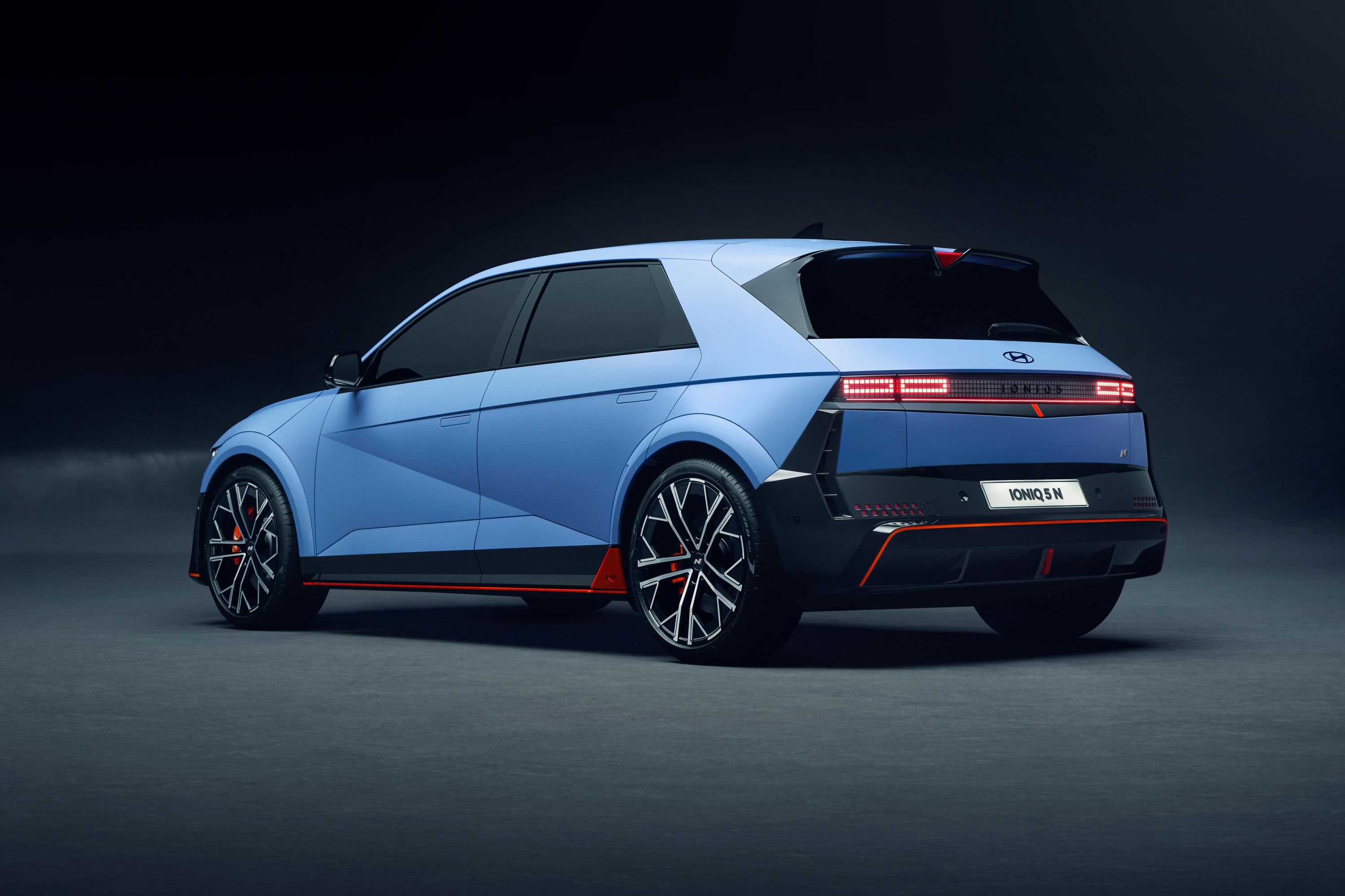
12. **Hyundai and Kia’s Solar Panel Roof Charging System**Seamlessly integrated into the panoramic glass roofs of select Hyundai and Kia hybrid and electric vehicles lies one of automotive engineering’s most forward-thinking, yet subtly understated, innovations: a solar charging system. This remarkable technology continuously generates electricity, whether the vehicle is parked under the sun or actively in motion, contributing to its energy efficiency and addressing some of the intrinsic challenges of electric vehicle ownership.
This system ingeniously embeds high-efficiency photovoltaic cells directly into the glass roof panel itself, effectively transforming a passive aesthetic element into an active power generation system. Unlike the often visually obtrusive aftermarket solar panels, this factory-integrated solution maintains the vehicle’s sleek, intended aesthetics while simultaneously adding functionality that directly aims to mitigate range anxiety, a primary concern for many electric vehicle owners. The integration is so refined that it blends effortlessly with the vehicle’s design, often going unnoticed by the casual observer.
The engineering feats required to successfully implement this feature are substantial. The solar cells must be robustly engineered to endure years of unremitting exposure to harsh environmental conditions, ranging from intense UV radiation to extreme temperatures, all while retaining sufficient transparency to ensure a pleasant and unobstructed cabin environment for occupants. Furthermore, a sophisticated power management system intelligently directs the harvested solar energy, channeling it either to the main drive battery for propulsion or to a separate battery that powers ancillary systems like climate control and various auxiliary functions, dynamically adapting based on the vehicle’s precise state and immediate energy requirements.
While the energy contribution derived from the solar roof might initially appear modest – typically yielding approximately 2-4 miles of additional electric range per day under optimal, sunny conditions – its cumulative effect is notably significant. Over a year of typical use, especially for owners who consistently park their vehicles outdoors in sunny locales, the system can add hundreds of miles of “free” electric range. More crucially, this system possesses the invaluable capability to prevent battery depletion during extended parking periods, effectively addressing the common and frustrating issue of returning to a partially discharged vehicle after a prolonged absence.
What renders this feature particularly intriguing is how it embodies a partial yet meaningful solution to electric vehicles’ inherent dependency on charging infrastructure. Even when entirely disconnected from the grid, these vehicles continue their quiet, efficient process of harvesting energy, thereby cultivating a small but impactful degree of self-sufficiency that conventional fossil fuel-powered vehicles simply cannot match. Despite its innovative nature and tangible benefits, this feature remains relatively unknown outside of dedicated enthusiast circles, partly because Hyundai and Kia have been surprisingly reserved in their marketing emphasis surrounding it. The system is currently available primarily on the Hyundai Sonata Hybrid, Kia Niro EV, and Kia Soul EV in select markets, although its expansion to additional models appears increasingly likely as the underlying technology continues to mature. This solar integration powerfully exemplifies how contemporary automotive design is increasingly embracing sustainable energy principles, creating vehicles that do not merely consume energy more efficiently but actively participate in its generation.

13. **Inside Jobs | Volkswagen | DDB | 2022**In the competitive landscape of talent acquisition, Volkswagen, in collaboration with DDB, executed a truly audacious and ultimately award-winning recruitment campaign in 2022 dubbed ‘Inside Jobs’. This brilliant ‘Trojan horse’ strategy bypassed conventional hiring channels, earning significant accolades at major award shows throughout 2023. The fundamental insight driving the campaign was a simple, yet profound, understanding of the automotive after-sales market: most mechanics are often poached from competitors, necessitating that new hires are already highly qualified to meet the relentless demands of the service industry.
Instead of adhering to the usual routes, such as posting online job descriptions or generic advertisements, Volkswagen embarked on a covert operation. They ingeniously printed their job advertisements directly onto the specific car parts that most frequently require maintenance. This meant that the recruitment message was not just delivered, but *earned*. The ads were only revealed to those individuals who possessed the requisite expertise and successfully navigated the complex diagnostic and repair processes of a vehicle’s issues. This highly targeted approach ensured that only the most skilled and dedicated mechanics would ever encounter the recruitment call.
The effectiveness of this unconventional method was undeniably striking. The campaign set an ambitious target to fill 1,000 roles, and within the initial campaign period, an impressive more than 350 mechanics were successfully hired. This success story stands as a powerful testament to the efficacy of embedding a message so deeply within the context of its target audience’s professional world, turning a routine maintenance task into a subtle, yet highly effective, recruitment channel. It elegantly proved that sometimes, the most direct path to skilled talent is a hidden one.
Read more about: From Dream to Disaster: The Unforgettable Rides That Stole Our Hearts, and the Automotive Letdowns That Left Us Stranded

14. **Trojan Threads | Ministerio de Trabajo y empleo | VMLY&R | 2022**In Argentina, a stark and deeply troubling reality persists: approximately 75% of textile workers are ensnared in conditions of forced labor. Compounding this tragedy, a significant barrier to their liberation is a profound lack of awareness regarding whom to contact for help. To address this urgent humanitarian crisis, the Ministerio de Trabajo y empleo, in collaboration with VMLY&R, launched the impactful ‘Trojan Threads’ initiative in 2022, a covert campaign designed to infiltrate sweatshops and empower these vulnerable workers.
The core of this ingenious strategy involved infiltrating these clandestine sweatshops through the guise of a fake brand of textile threads. These seemingly ordinary spools of thread contained a crucial, hidden message: a helpline number. This vital piece of information was meticulously embedded within the threads, designed to become visible only to the workers as they handled and used them in their daily, grueling tasks. This brilliant infiltration allowed a lifeline to reach those who needed it most, directly within their oppressive work environments, bypassing the usual surveillance and control mechanisms.
The impact of ‘Trojan Threads’ was immediate and profound, yielding remarkable results in a shockingly short timeframe. Within just one week of the initiative’s launch, a staggering 12 lawsuits were filed, 23 lives were directly saved from forced labor, and two police raids were successfully conducted, dismantling exploitative operations. The undeniable success of this project has even prompted Argentina’s Congress to actively work on drafting new legislation. This legislative effort aims to establish clearer pathways and resources, ensuring that enslaved workers are acutely aware of where to turn for vital assistance, thereby transforming a covert intervention into a systemic change.

15. **Stray Sheep Code | Sony Music | SIX Tokyo | 2020**During the tumultuous period of the pandemic, when direct interaction between musicians and their fervent fanbases became a significant challenge, Sony Music, in partnership with SIX Tokyo, conceived a truly ‘baa-rilliant’ and unconventional campaign in 2020: the ‘Stray Sheep Code’. This ingenious strategy was specifically designed to ignite excitement and maintain a high level of engagement among fans of the acclaimed musician Kenshi Yonezu, leading up to the release of his new album, ‘STRAY SHEEP.’ Recognizing that Yonezu’s fanbase predominantly interacted through YouTube, this platform became the strategic canvas for their disruptive and captivating intervention.
Sony Music ingeniously initiated what appeared to be a ‘hack’ of Yonezu’s official YouTube channel. In a move that immediately piqued curiosity, they replaced 55 of his existing music videos with perplexing ‘404 error’ messages, accompanied by cryptic sheep emojis. This audacious act instantly sent his dedicated fans into a frenzy of speculation and communal problem-solving, as they began ‘flocking’ together online to decipher the hidden messages. The intricate puzzle was quickly dubbed ‘meh-rse’ code – a playful nod to the Japanese onomatopoeia for a sheep’s bleat (‘meh’).
The brilliance of the campaign lay in its ability to transform a potential technical glitch into an interactive, community-driven event. Fans enthusiastically collaborated, applying their collective intellect and passion to unravel the embedded code. Their successful deciphering led directly to the highly anticipated release of a new song, a reward perfectly timed to capitalize on the generated hype. The stunt’s impact was nothing short of phenomenal: the newly released track garnered over a million views within a mere two hours of its unveiling, a figure that skyrocketed to an astounding 10 million views within just four days, establishing a new record for Yonezu.
From the nuanced engineering marvels hidden within our vehicles to the subtle yet profound narratives woven into advertising campaigns, the enduring pursuit of ‘hidden messages’ reveals a universal human desire for deeper connection and ingenious design. These compelling examples, whether they enhance the safety and convenience of our daily commutes or spark vital social conversations and fan engagement, collectively underscore a fundamental truth: the most impactful innovations often reside just beneath the surface, patiently waiting for the discerning eye to discover them. They stand as a powerful testament to the fact that true mastery, whether in the intricate realm of product design, sophisticated engineering, or artful communication, often speaks loudest in its whispers, enriching our lives in ways we might never consciously anticipate, yet profoundly appreciate upon revelation. The director’s hidden message, indeed, continually enriches our understanding of the world around us, inviting us to look closer, think deeper, and celebrate the artistry embedded within the unseen.



